A-Level CIE Biology: 15 Coordination & Control
1/37
There's no tags or description
Looks like no tags are added yet.
Name | Mastery | Learn | Test | Matching | Spaced |
|---|
No study sessions yet.
38 Terms
what is a hormone
chemical substance produced by an endocrine gland and carried by the blood.
chemicals which transmit information from one part of the organism to another and bring about a change.
they alter the activity of one or more specific target organs
what do hormones control
functions that don’t need instant responses
what is the endocrine system
endocrine glands that produce hormones in animals collectively
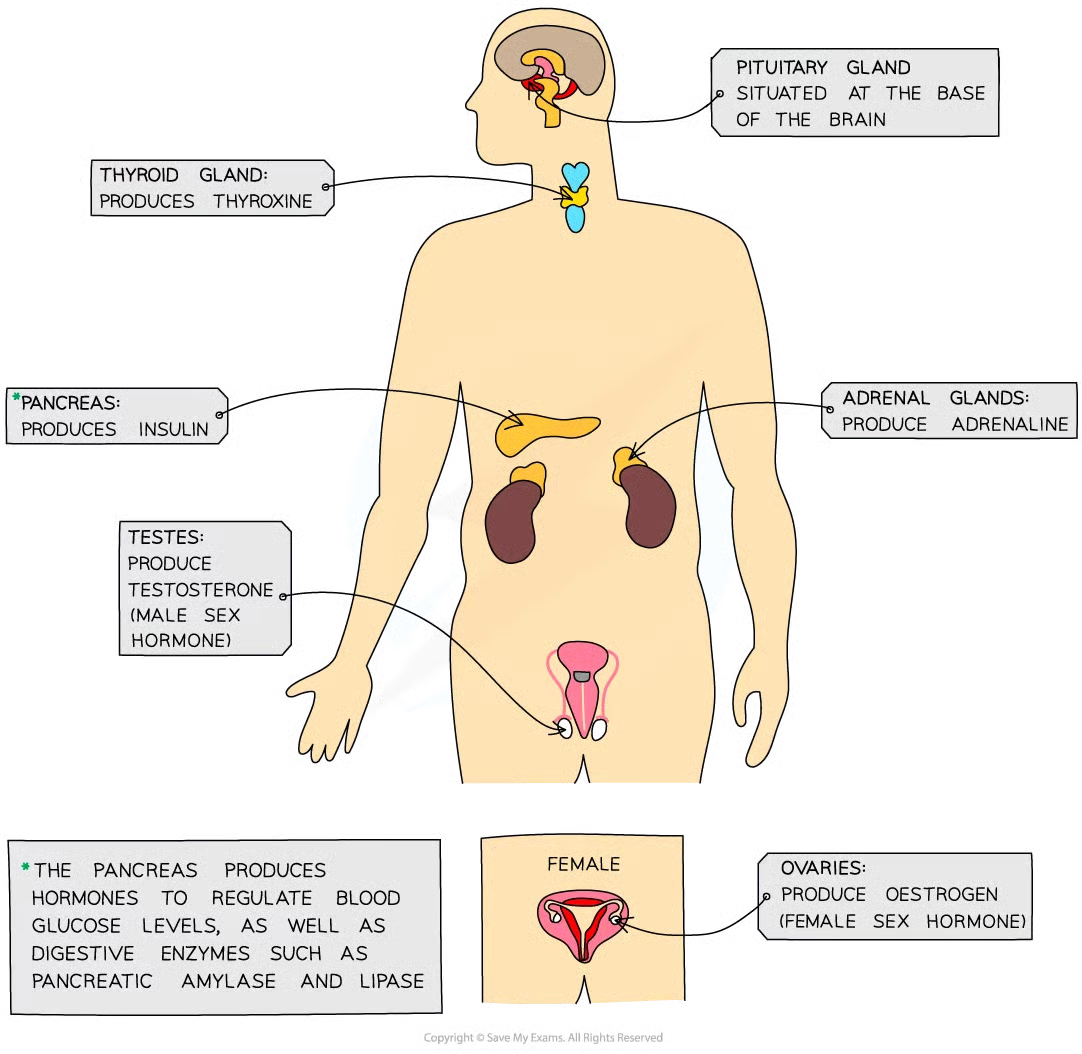
gland
group of cells that produces and releases one or more substances (secretion)
examples of cell-signalling molecules/hormones in blood
insulin
glucagon
ADH
adrenaline
why do endocrine glands have a good blood supply
when they make hormones, they need to get the hormones into the bloodstream/blood plasma asap so they can travel around body to target organs and bring about response
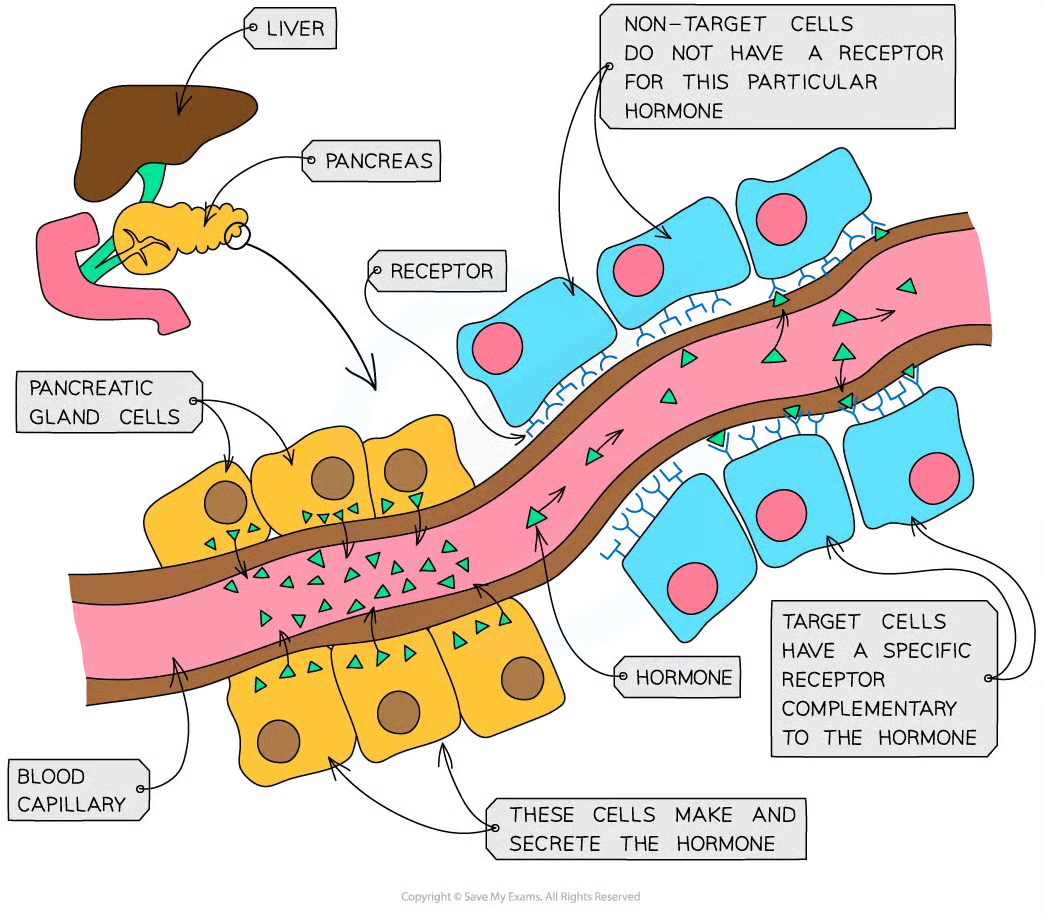
what is needed for hormones
cells with receptors that the hormone can bind to either found on the csm or inside cells. they must be complementary to have an effect
what hormones are peptides
insulin, glucagon and ADH
features of peptide hormones
water-soluble so can’t cross pbl of csm
bind to receptors on csm of target cells which activates second msngers to transfer signal thru cyto
what hormones are steroids
testosterone, oestrogen, and progesterone
features of steroid hormones
lipid-soluble and can cross pbl
bind to receptors in cyto of nucleus of target cells
human nervous system: 2
central nervous system/cns - brain and spinal cord
peripheral nervous system/pns - all nerves in body
what does the nervous system allow us to do and how
make sense of our surroundings nad respond to them and to coordinate and regulate body functions
info sent thru nervous system as nerve impulses which are electrical signals passing along nerve cells (neurones)
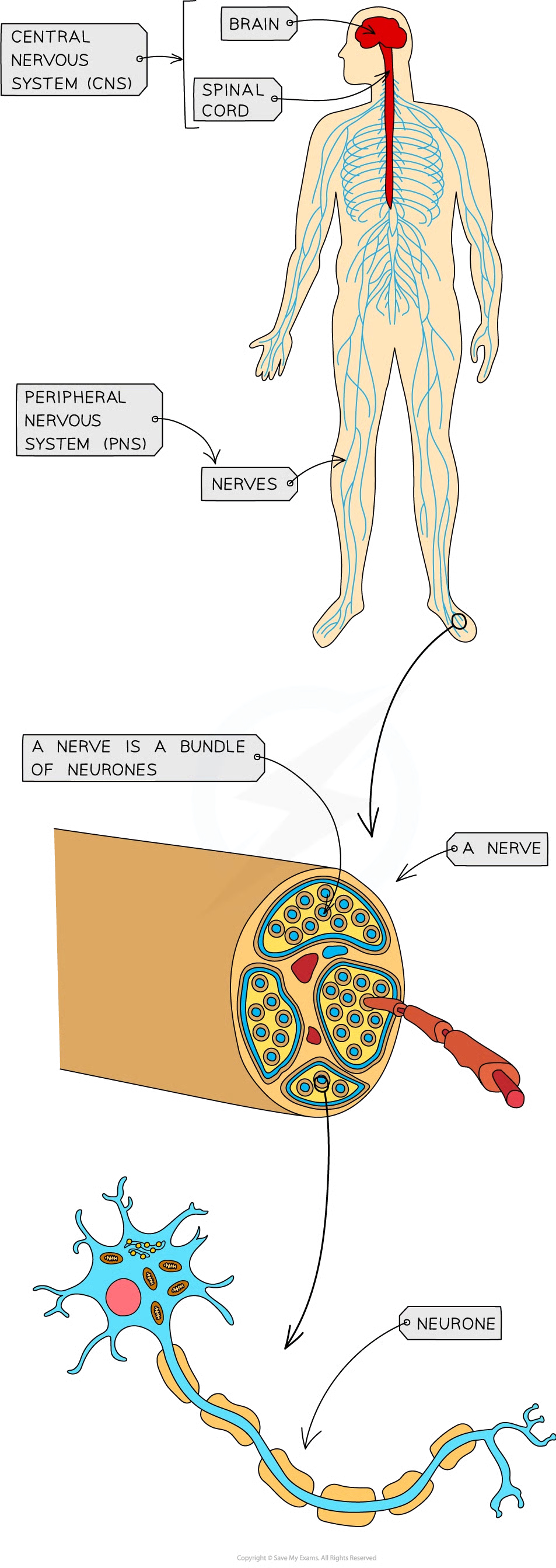
nerve
bundle of neurones
neurones function
coordinate the activity of sensory receptors (e.g. eye), decision making centres in the cns, and effectors such as muscles and glands.
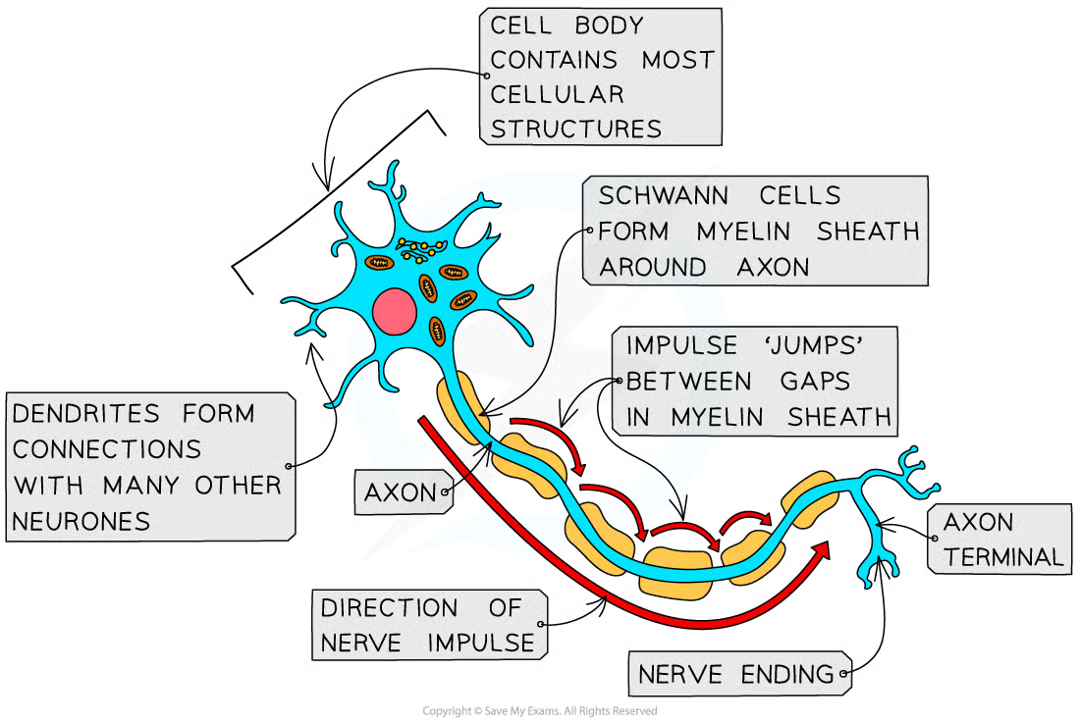
nervous system: parts, message, method, effectors, speed, duration
brains, spinal cord, nerves/neurones
electrical impulse
neurones
muscles or glands
very fast
short until electrical impulses stop
endocrine system: parts, message, method, effectors, speed, duration
glands
chemical/hormone
bloodstream
target cells in specific tissues
slower
longer until hormone broken down
axon
neurone’s long fibre
how is an axon insulated
fatty sheath with small uninsulated sections along its length (nodes of Ranvier)
what is the fatty sheath made of
myelin, substance made by specialised cells (schwann cells) when they wrap themselves around axon along its length
what is the effect of the axon
electrical impulse doesn’t travel down whole axon but jumps from one node to the next
why do electrical impulses jump
less time wasted transferring impulse from one cell to another
dendrites
cell bodies contain many extensions/dendrites that allow them to connect to many other neurones and receive impules from them forming a network for easy communication
3 main types of neurone
sensory, relay, motor
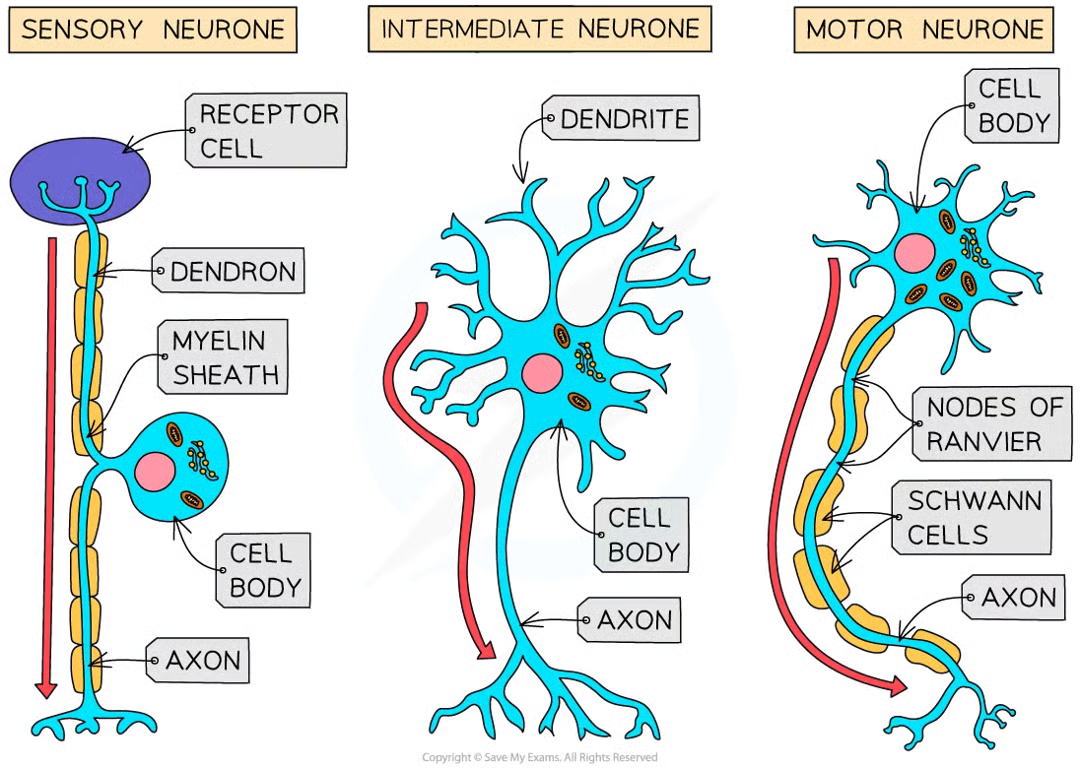
sensory function
carry impulses from receptors to cns/brainorspinalcord
intermediate/relay neurone function
found entirely within cns and connect sensory and motor
motor function
carry impulses from cns to effectors/muscles or glands
are all neurones the same
no, each has slightly diff structure
motor neurone structure: 3
large cell body at one end, that lies within spinal cord or brain
nucleus that is always in its cell body
many highly-branched dendrites extend from cell body, providing large sa for axon terminals of other neurones
sensory neurones structure
same basic as motor but have cell body that branches off in middle of cell = may be near source of stimuli or in swelling of spinal nerve known as ganglion
receptor cell
cell that responds to a stimulus. transducers. convert energy in one form (e.g. light/heat/sound) into energy in electrical impulse within sensory neurone
where are receptor cells found
in sense organs (e.g. light receptor cells found in eye, chemoreceptors in taste buds)
what are some receptors
specialised cells that detect a specific tyep of stimulus and infleunce the elcetrical activity of a sensory neurone (light and chemo eye and tongue)
others (e.g. touch) are just ends of sensory neurones themself
what happens when receptor cells are stimulated. what if its weak/strong
depolarised
weak= not sufficiently depolarised and sensory neurone is not actviated to send impulses
strong=sensory neurone activated and transmits impulses to cns
tongue surface.
many small bumps called papillae covering surface of tongue, each covered in many taste buds which contain many chemoreceptors that are sensitive to chemicals in food and drinks bc covered with receptor proteins to detect diff chemis
what do chemoreceptors in taste buds that detect salt (sodium chloride) respond directly to
sodium ions.
if salt is present in food (dissolved in saliva) being eaten:
na+ diffuse thru highly selective channel proteins in csm of microvilli of chemoreceptor cells
leads to depolarisation of chemoreceptor cell memb
increase in + charge inside cell = receptor potential
if sufficient stimulation by na+ and sufficient depolarisation of membrane, the receptor potential becomes large enough to stimulate voltage-gated calcium ion channel proteins to open
as result, calcium ions enter the cyto of chemoreceptor cell and stimulate exocytosis of vesicles containing neurotransmitters from the basal membrane of the chemoreceptor
neurotransmitter stimulates an action potential in sensory neurone
sensory neurone then transmits an impulse to the brain
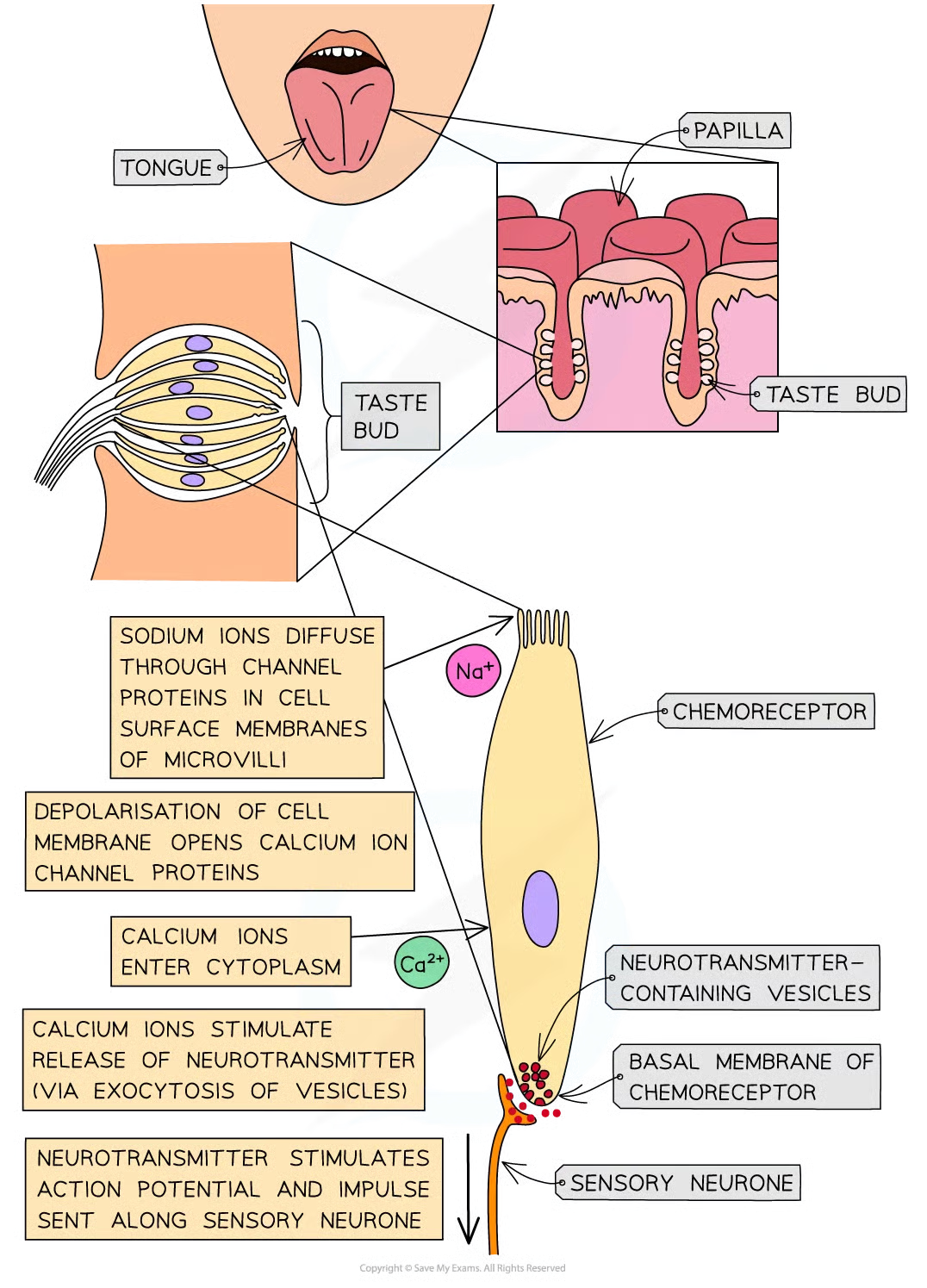
action potential page